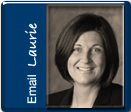
 While taking a Duke University course on Behavioral Finance, which is a topic I find fascinating, the professor presented the following scenario on organ donation:
While taking a Duke University course on Behavioral Finance, which is a topic I find fascinating, the professor presented the following scenario on organ donation:
While individuals around the world generally approve of organ donation, very few actually sign a donor card to grant permission, especially here in the US.
According to the chart below, some countries like Austria and France have an extremely high participation rate, 100% of the population. Why, then, is there such a difference from a country like Germany with only a 12% participation rate to Austria with a 100% participation rate? They share a border and culturally don’t have vastly different beliefs.

“Do Defaults Save Lives?” www.sciencemag.org
The answer is actually much simpler than cultural differences or beliefs. It is Defaults. Individuals love to take the easiest way out. The fewer decisions we have to make the better. Requiring people to opt out of something rather than opt in is a very effective way to push us toward a choice.
Defaults can be a very powerful tool, not only to increase organ donors, but also in investing for your retirement. Many 401(k)s offered by employers opt to automatically enroll their employees in the plan. If just a few percent is automatically deducted from employee’s paycheck, most individuals will not go out of their way to stop this as shown in the graphic below.

Automatic enrollment plans actually encourage individuals who are younger and have lower incomes to start saving for retirement much earlier than they normally would, when the effects of compounding interest are the most powerful.
While I will likely never live to regret being an organ donor, 401(k) contributions make me cringe just a little precisely every other Monday. Hopefully though this delayed gratification will pay off in retirement!
Angela Palacios, CFP®is the Portfolio Manager at Center for Financial Planning, Inc. Angela specializes in Investment and Macro economic research. She is a frequent contributor to Money Centered as well asinvestment updates at The Center.
The information has been obtained from sources considered to be reliable, but we do not guarantee that the foregoing material is accurate or complete. Any opinions are those of Center for Financial Planning, Inc., and not necessarily those of RJFS or Raymond James.





